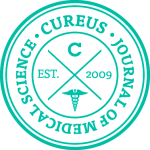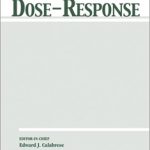José Manuel Mazón-Suástegui, Milagro García-Bernal, Pedro Enrique Saucedo, Ángel Campa-Córdova, Fernando Abasolo-Pacheco
Homeopathy outperforms antibiotics treatment in juvenile scallop Argopecten ventricosus: effects on growth, survival, and immune response
Homeopathy, 2017, 106 (1), 18-26

Background – Mortality from vibriosis in mollusk production is attributed to pathogenic bacteria, particularly Vibrio alginolyticus. Use of increasingly potent antibiotics has led to bacterial resistance and increased pathogenicity. Alternatives in sanitation, safety, and environmental sustainability are currently under analysis. To-date, homeopathy has been investigated in aquaculture of freshwater fish, but not in marine mollusks. The effect of the homeopathic complexes in the growth, survival, and immune response of the Catarina scallop Argopecten ventricosus were assessed.
Methods – A bioassay to assess the potential of homeopathy in improving cultivation of juvenile A. ventricosus was conducted for 21 days, with a final challenge of 120 h with V. alginolyticus. The experimental design included two homeopathic formulas The homeopathic complex Passival, consisting of Passiflora incarnata 30 CH, Valeriana officinalis 30 CH, Ignatia amara 30 CH and Zincum valerianicum 30 CH plus Phosphoricum acid 30 CH (treatment TH1) or Silicea terra 30 CH (TH2), two antibiotics (ampicillin = AMP, oxytetracycline = OXY), and two reference treatments (without homeopathic or antibiotic treatment = CTRL, ethanol 30° GL = ETH). Additionally, a negative control CTRL− (untreated/uninfected) is included in the challenge test. Juvenile scallops (4.14 ± 0.06 mm, 13.33 mg wet weight) were cultivated in 4 L tanks provided with aerated, filtered (1 μm), and UV-sterilized seawater that was changed every third day. They were fed a blend of the microalgae Isochrysis galbana and Chaetoceros calcitrans (150,000 cells mL−1 twice a day). All treatments were directly added to the tank water and then 500 mL challenge units were inoculated with 1 × 107 CFU/mL (LD50) of V. alginolyticus.
Results – Juveniles grew significantly larger and faster in height and weight with TH2 compared to the ETH and CTRL (P < 0.05, ANOVA). Higher concentrations of proteins occurred in scallops exposed to TH2 (160.57 ± 7.79 mg g−1), compared to other treatments and reference treatments. Higher survival rate during the challenge bioassay occurred with TH1 (85%), compared to AMP (53%), OXY (30%), and CTRL (0%), and superoxide dismutase (P < 0.05) was significantly higher in scallops treated with TH1, compared to other treatments and reference treatments.
Conclusions – Homeopathic treatments improved growth and survival and enhanced survival against V. alginolyticus in juvenile A. ventricosus. This suggests that homeopathy is a viable treatment for this mollusk to reduce use of antibiotics in scallops and its progressive increase in pathogenicity in mollusk hatcheries.








Lascia un commento
Devi essere connesso per inviare un commento.